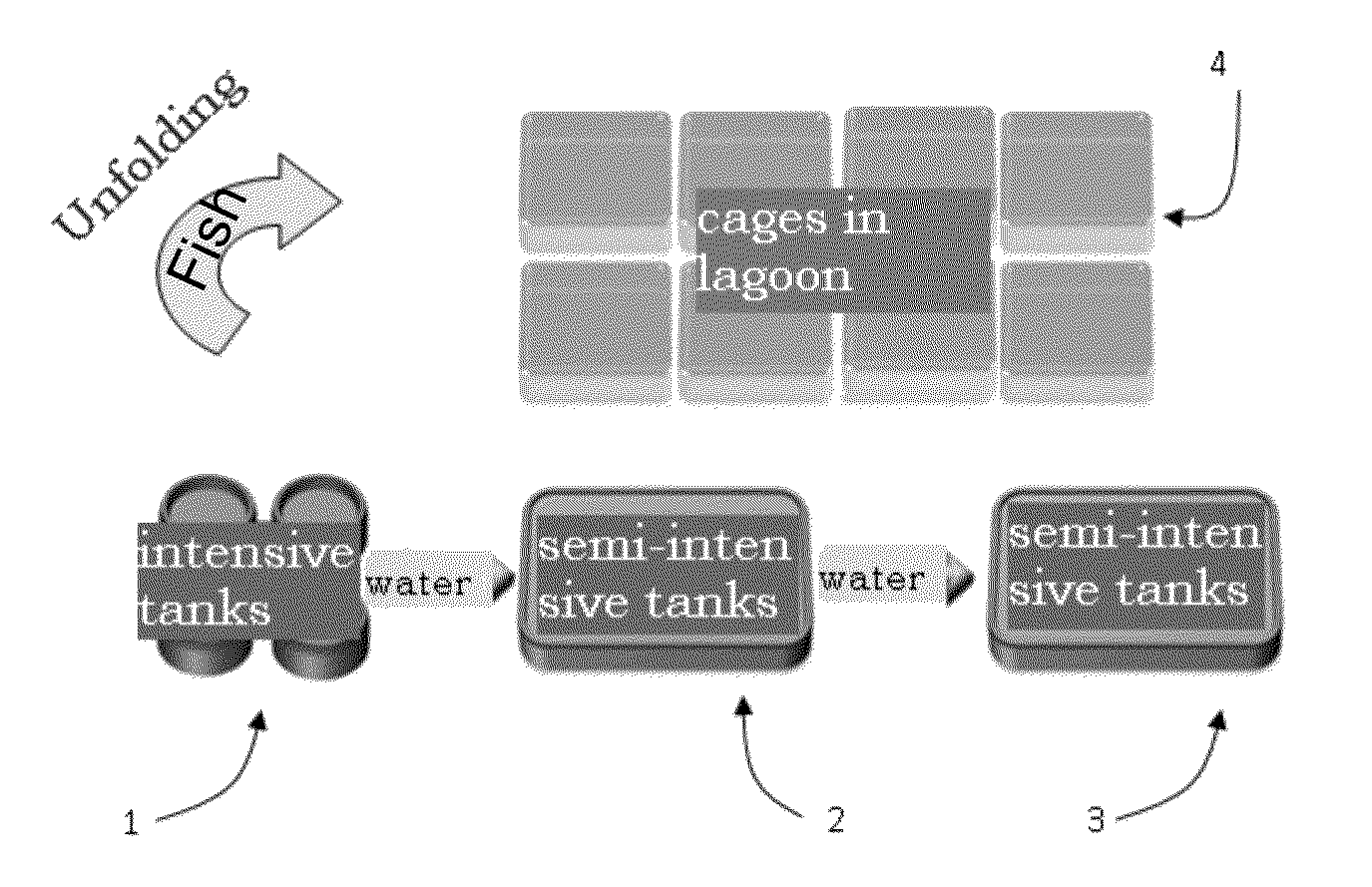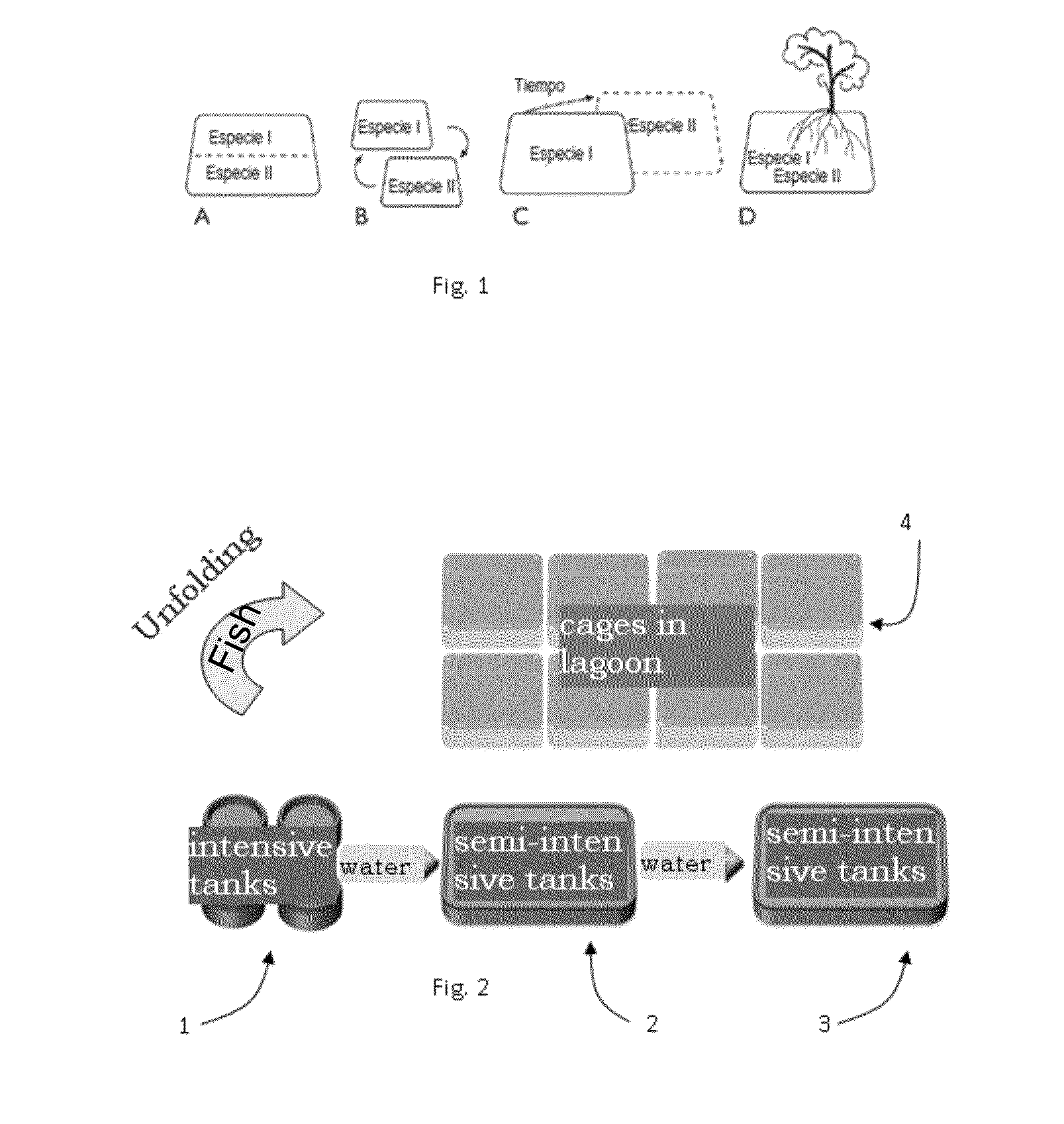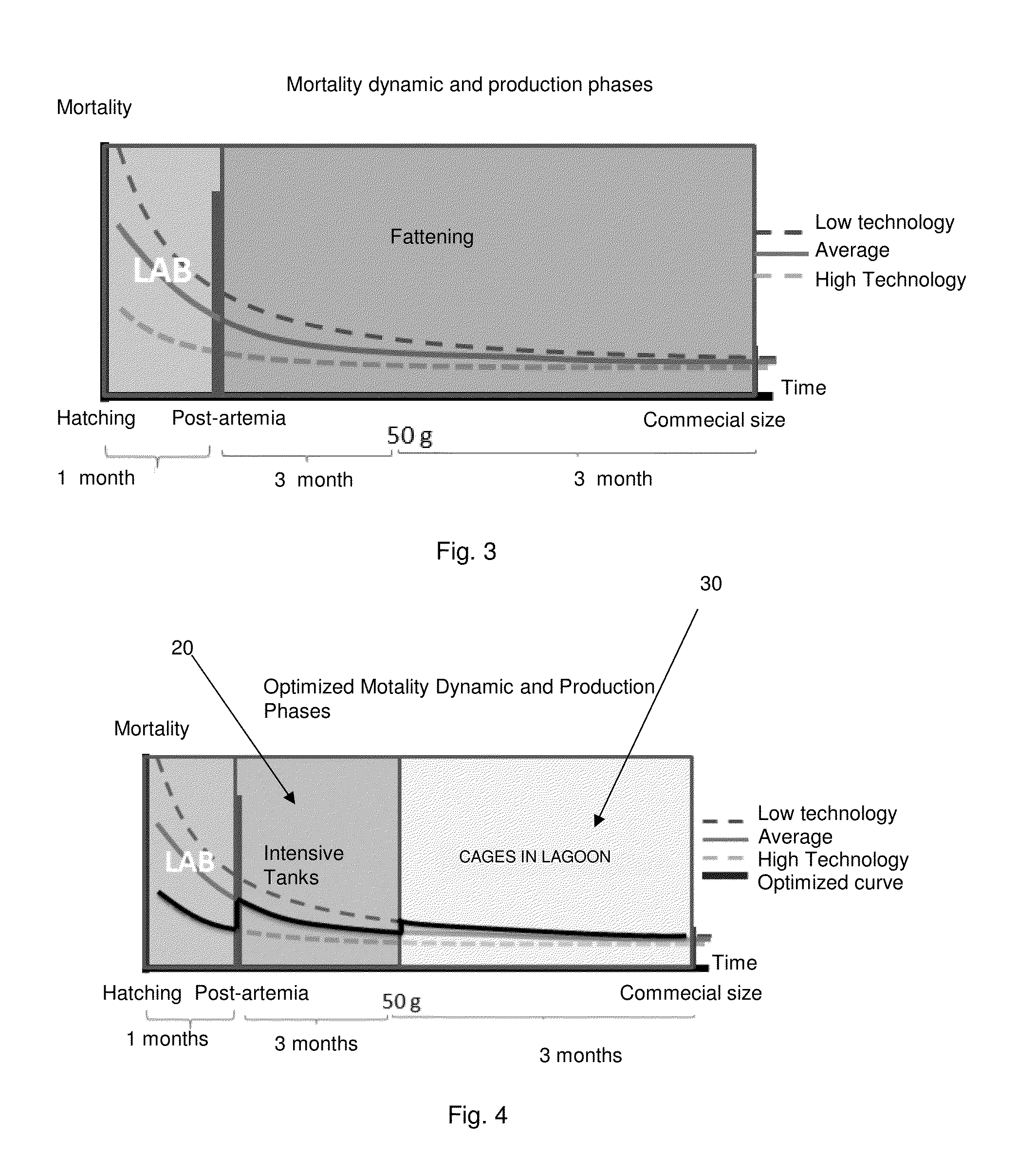Method and system for aquaculture
a technology for aquaculture and methods, applied in pisciculture and aquaria, applications, climate change adaptation, etc., can solve the problems of low degree of control, low initial cost, low level of technology, etc., and achieve high commercial value, high commercial value, and high quality
- Summary
- Abstract
- Description
- Claims
- Application Information
AI Technical Summary
Benefits of technology
Problems solved by technology
Method used
Image
Examples
Embodiment Construction
Definitions
[0029]Residual water-Water in a sub-system which goes from a first or second sub-system to a second or third sub-system, respectively; it contains, among other things, food remains which primary species did not consume, waste material, feces and phytoplankton, used for the culture of the secondary or tertiary species depending on the case.
[0030]External food. User-provided food, possibly textured, such as balanced pellets for the species or organism specifically or generally.
[0031]About. The use of the term “about” provides a specific additional range. The term is defined as follows: the additional range provided by the term is approximately ±10%. As an example, but not in a limitative manner, if it states “about between 30 and 40 litters”, the exact range falls between 27 and 44 liters, or between 33 and 44 liters, or between 27 and 36 liters, or it could be between 33 and 36 liters as well. Any possibility described previously is included within the term “about”.
[0032]B...
PUM
 Login to View More
Login to View More Abstract
Description
Claims
Application Information
 Login to View More
Login to View More - R&D
- Intellectual Property
- Life Sciences
- Materials
- Tech Scout
- Unparalleled Data Quality
- Higher Quality Content
- 60% Fewer Hallucinations
Browse by: Latest US Patents, China's latest patents, Technical Efficacy Thesaurus, Application Domain, Technology Topic, Popular Technical Reports.
© 2025 PatSnap. All rights reserved.Legal|Privacy policy|Modern Slavery Act Transparency Statement|Sitemap|About US| Contact US: help@patsnap.com



